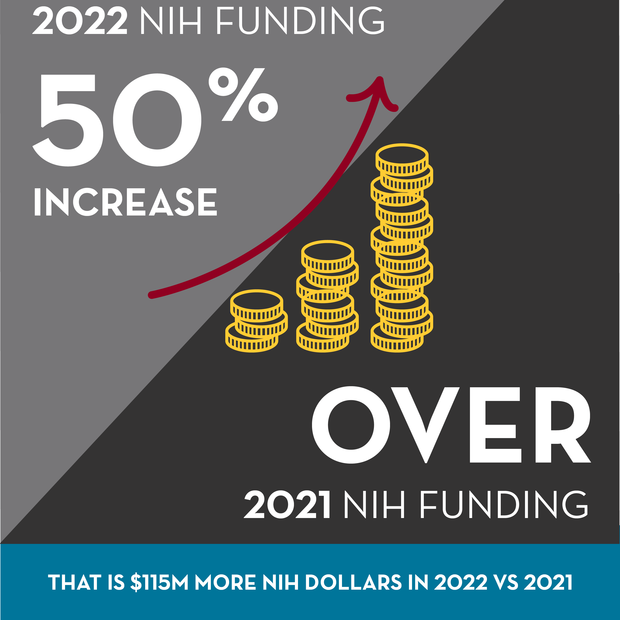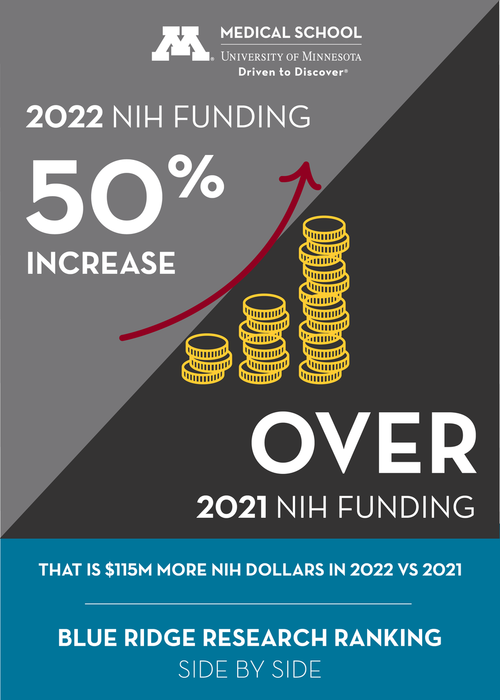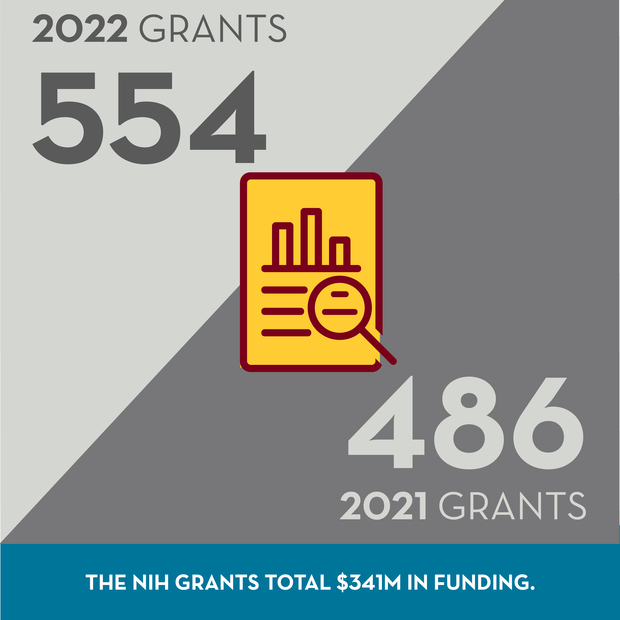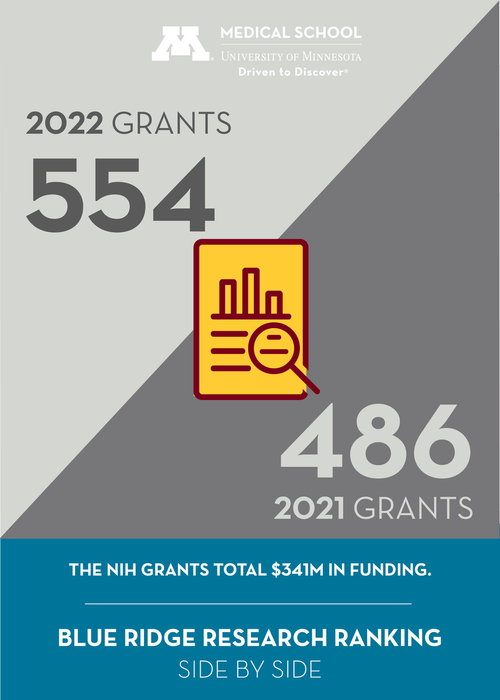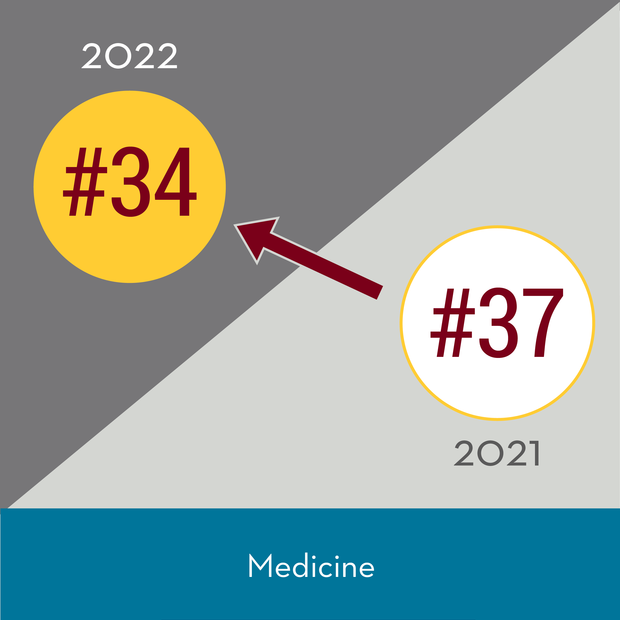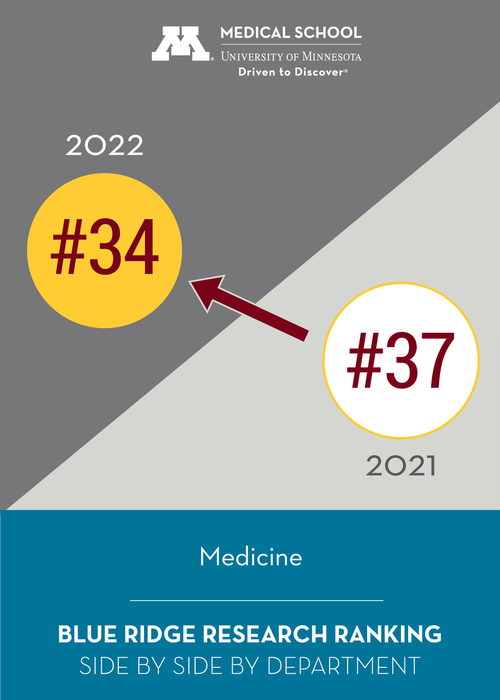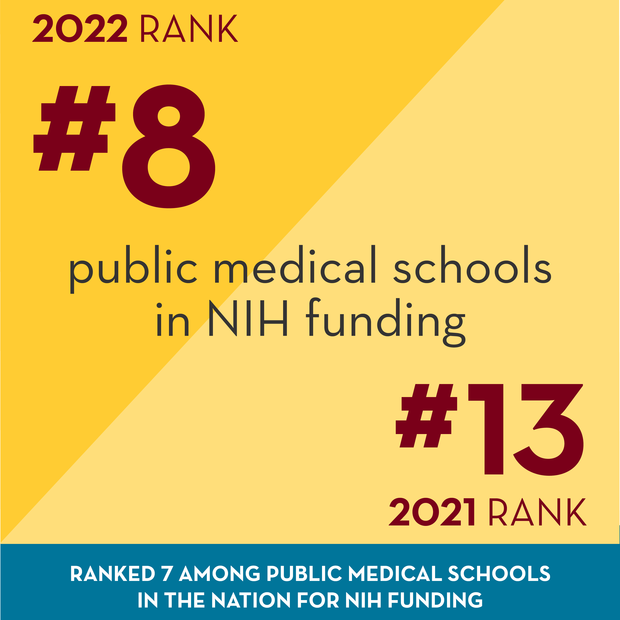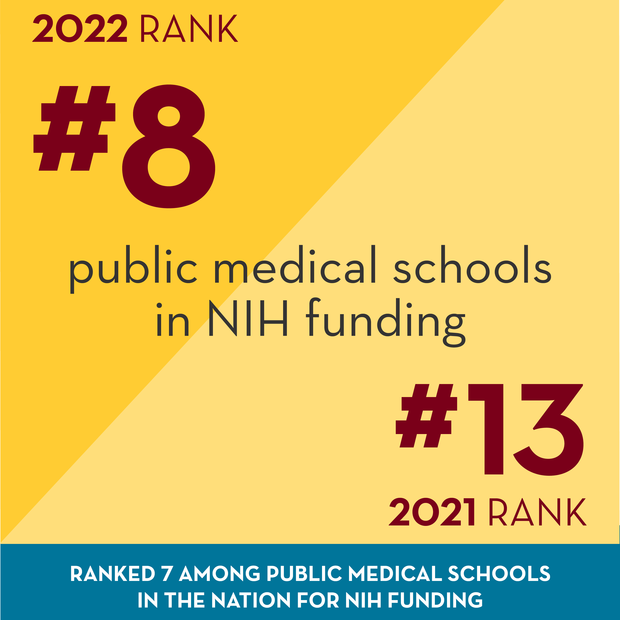Why Choose Us?
Reasons for Choosing to Train in the Medical School at University of Minnesota
- High Quality Research Education
- Strength of Research Enterprise
- Centers, Institutes and Programs for Student and Postdoc Training

The University of Minnesota Medical School is committed to fostering the research training of Master's and Predoctoral (PhD) students and postdoctoral scholars. Through a breadth of disciplines and research areas to include studies in molecular biology, immunology, infectious diseases, stem cell biology, neuroscience, rehabilitation sciences and pharmacotherapeutics, the Medical School provides rigorous mentored-research training coupled with focused coursework to prepare the next generation of biomedical scientists. For graduate studies, we offer 11 diverse graduate programs across multiple Centers, Institutes, Programs and Departments, allowing trainees to engage in cutting edge research, using high caliber instrumentation and contributing to groundbreaking discoveries in health- and biomedical-relevant research areas. Similarly, postdoctoral scholars have the unique opportunity to engage in a breadth of research across basic, translational and clinical arenas within the Medical School.
Research at the University of Minnesota Medical School serves as an economic engine that drives Minnesota's health industry. Our research ranges from investigating the innermost workings of cells to analyzing health data at a population level. Our researchers, educators, and medical professionals thrive in an environment where cross-discipline teamwork is valued, encouraged, and rewarded. In partnership with many biomedical and health science specialists across the University, our faculty work to untangle today’s biggest medical challenges and understand the underlying science behind them.
The Blue Ridge Institute for Medical Research has released its 2022 rankings, and University of Minnesota Medical School is ranked #21 of all U.S. medical schools and #8 among all public U.S. medical schools in NIH funding. This is an incredible achievement for our faculty, students, postdocs and staff. We have achieved the goal set by the Board of Regents and the State of Minnesota to be a top 25 medical school by 2023. These accomplishments demonstrate both the excellence and commitment of our faculty and staff.
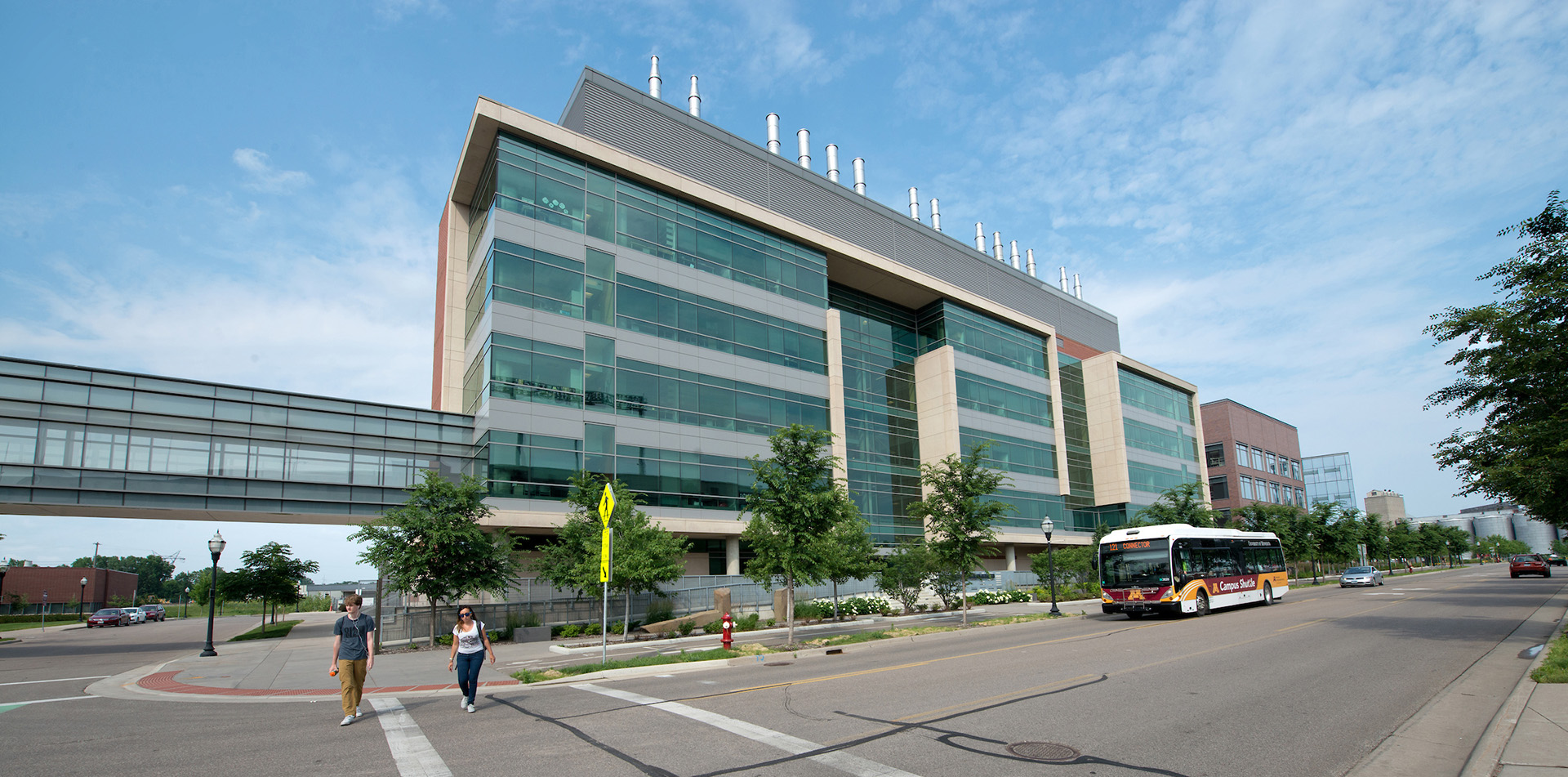
Centers, Institutes, and Programs (CIPs) - The interdepartmental and interdisciplinary centers, institutes and programs within the Medical School serve vital roles in advancing the research and educational missions. The synergy of the various centers, institutes, programs and departments provide a rich and diverse ecosystem for engaging in health- and biomedical-related sciences in the Medical School at the University of Minnesota. Furthermore, there is a rich integration and cross-pollination of ideas, research and discoveries among the various CIPs and Departments.
The University of Minnesota's Center for Immunology focus on inflammation, immunity and infection has spawned the creation of two new centers: Center for Inflammation Science (CIS) and Institute of Infectious Disease (IID). The Institute for Translational Neuroscience has forged partnerships to provide expansive discoveries and training through the Center for Magnetic Resonance Research, Center for Neuroengineering, Center for Neurodegenerative Disease and the N. Bud Grossman Center for Memory Research and Care.

The Twin Cities is formed by two neighboring major cities of Minneapolis and the state capital of St. Paul. These two cities have a total population of about 750,000 residents and share the University of Minnesota Twin Cities campus, which sits at the intersection of the two cities. The metropolitan area population is at 3.5 million residents, with a diverse population of foreign residents. Approximately 10% of the population (or 385,000) are foreign born, with the top groups coming from Mexico, India, and Laos. The largest industries in Minneapolis-St. Paul-Bloomington, MN-WI are Health Care & Social Assistance (288,219 people), Manufacturing (263,958 people), and Retail Trade (208,749 people), and the highest paying industries are Management of Companies & Enterprises ($84,047), Utilities ($83,469), and Finance & Insurance ($74,118).
In 2021, universities in Minneapolis-St. Paul-Bloomington, MN-WI awarded 73,339 degrees. The student population of Minneapolis-St. Paul-Bloomington, MN-WI in 2021 is skewed towards women, with 166,752 male students and 329,156 female students. The largest universities in Minneapolis-St. Paul-Bloomington, MN-WI by number of degrees awarded are Capella University (14,837 and 20.2%), University of Minnesota-Twin Cities (14,640 and 20%), and Walden University (12,768 and 17.4%).
Data attained from datausa.io
Diversity, equity, and inclusion is at the heart of our tri-part mission of innovative research, excellence in education and training, and collaborating with communities to improve health and health outcomes. The University of Minnesota Medical School is dedicated to providing excellence across our mission - high-quality education for students of all backgrounds; innovative and cutting-edge research and exceptional clinical outcomes that promote health equity. Through a variety of services and programs, we aim to engage everyone in our collective work toward inclusive excellence, promote equity in access to learning, scientific inquiry, care delivery, and celebrate our diversity through cultural experiences and opportunities on and off campus.
The University of Minnesota Medical School is led in diversity, equity and inclusion efforts by the Office of Diversity, Equity and Inclusion. This office, led by Vice Dean Ana Nunez, works with all the Medical School units, including the Office of Graduate and Postdoctoral Studies, to ensure best practices in recruiting, retaining and preparing a diverse workforce for entry into biomedical research enterprise. The office works across both campuses and Medical School departments, centers, and units in collaboration with community partners and health system leadership to promote and advance innovative ideas, programs, and initiatives making diversity, equity, and inclusion a foundation of institutional excellence.
The University of Minnesota embraces the breadth of rich and diverse cultures across campus and present within the larger metropolitan area. In working with the International Student and Scholar Services, the University supports and fosters inclusion of diverse groups to share culture experiences for groups to learn, appreciate and engage in. One program, among others, is the Culture Corps, which focuses on international students developing projects and initatives to foster global perspectives to the University of Minnesota campus.
The vision of the International Student and Scholar Services Office (ISSS), which is shared by the Office of Graduate and Postdoctoral Studies, is to have an inclusive and engaged international learning community. One of the ways ISSS helps international students become more active on campus is through the Culture Corps Program. International students can provide unique perspectives and new insights to enrich cross-cultural understanding at the University of Minnesota. International students receive monetary awards based on the time investment, resources committed and impact of the project.
Other opportunities for graduate students and postdoctoral fellows to engage, learn and share cultural experiences include:
Prospective Students: Why Choose Us?

The University of Minnesota Medical School is one of the largest in the country, with two campuses based in the Twin Cities and Duluth, Minnesota.
